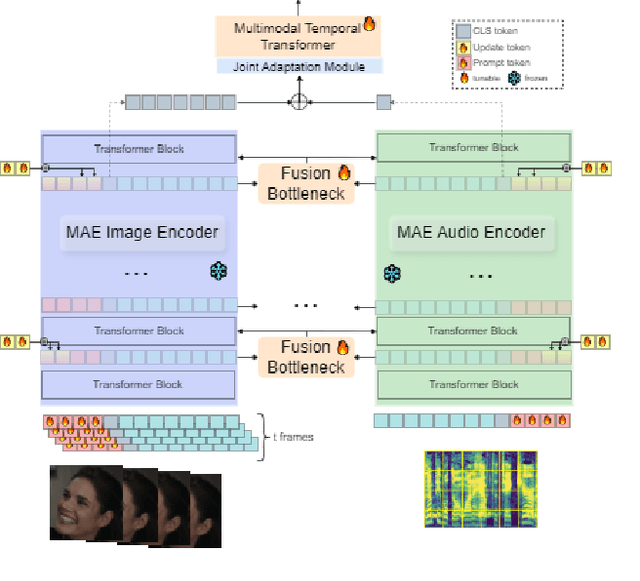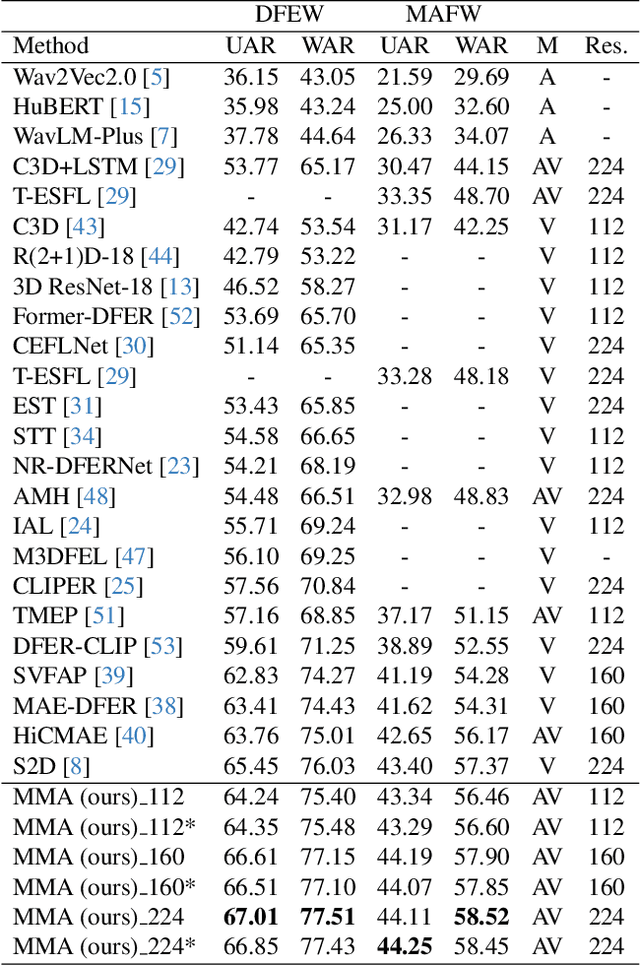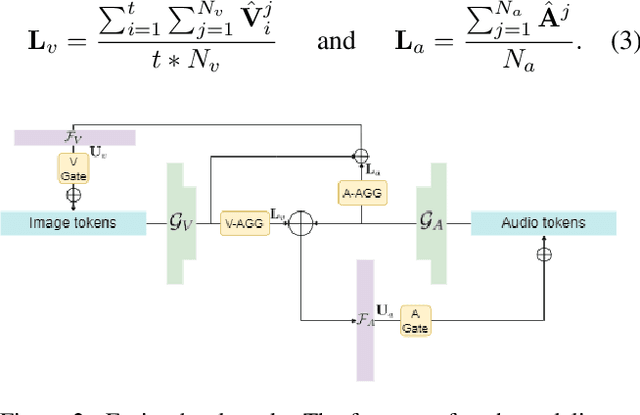MMA-DFER: MultiModal Adaptation of unimodal models for Dynamic Facial Expression Recognition in-the-wild
Paper and Code
Apr 13, 2024



Dynamic Facial Expression Recognition (DFER) has received significant interest in the recent years dictated by its pivotal role in enabling empathic and human-compatible technologies. Achieving robustness towards in-the-wild data in DFER is particularly important for real-world applications. One of the directions aimed at improving such models is multimodal emotion recognition based on audio and video data. Multimodal learning in DFER increases the model capabilities by leveraging richer, complementary data representations. Within the field of multimodal DFER, recent methods have focused on exploiting advances of self-supervised learning (SSL) for pre-training of strong multimodal encoders. Another line of research has focused on adapting pre-trained static models for DFER. In this work, we propose a different perspective on the problem and investigate the advancement of multimodal DFER performance by adapting SSL-pre-trained disjoint unimodal encoders. We identify main challenges associated with this task, namely, intra-modality adaptation, cross-modal alignment, and temporal adaptation, and propose solutions to each of them. As a result, we demonstrate improvement over current state-of-the-art on two popular DFER benchmarks, namely DFEW and MFAW.
 Add to Chrome
Add to Chrome Add to Firefox
Add to Firefox Add to Edge
Add to Edge